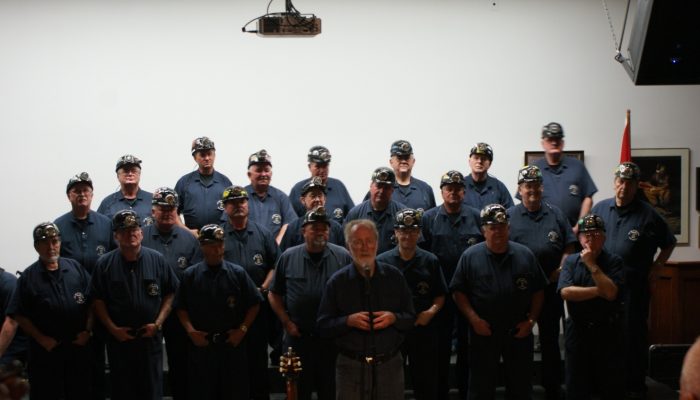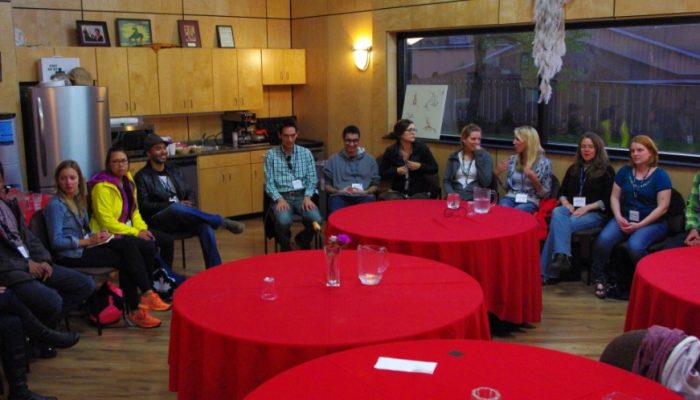This week, Imaggeo on Mondays is brought to you by Josep Ubalde, who transports us to a wonderful site in western Turkey: a city of hot springs and ancient ruins dubbed cotton castle, after the voluminous white rocks that spread from the spring’s centre… Pamukkale is lies in Turkey’s inner Aegean region, within an active fault that favours the formation of hot springs. The spring’s hot water ...[Read More]
If you didn't find what you was looking for try searching again.
Geology for Global Development
GUEST BLOG: Hydrogeology & WASH Conference – What can hydrogeologists contribute to safe water supply and poverty reduction?
Last month GfGD provided two small bursaries to allow Victoria Gill (Aberdeen University) and Mike Rose (Camborne School of Mines) to attend a conference on Hydrogeology and WASH (Water, Sanitation and Hygiene) at the Geological Society of London. The conference was organised by Hydrogeologists without Borders. Here Victoria reports on the event… The main theme of the conference explored how ...[Read More]
Between a Rock and a Hard Place
Science Snap (#28): The Eye of the Sahara
Surrounded by thousands of square miles of ubiquitous desert, the “Eye of the Sahara” peers out from the Earth’s surface and at nearly 50 km wide, its easily visible from space too. The “Eye of the Sahara” is known as a Richat Structure, a geological feature consisting of a series of alternating circular layers of sedimentary, igneous and metamorphic rock, exposed by erosion. The “Eye of the Sahar ...[Read More]
WaterUnderground
The home of our hearts day 5: The Sydney Tar Ponds and keeping the spark alive
[part six of a special six-part blog series by Mark Ranjram, MEng student at McGill University. From June 8 to June 13 2014, Mark had the privilege of being a part of the Canadian Water Network’s (CWN) Student and Young Professionals (SYP) Workshop in Cape Breton Island, Nova Scotia. Here is the prologue to this series.] The fifth and final day of the workshop started off with a tour of the Sydney ...[Read More]
Soil System Sciences
Notes on the Short Course on Forest Fire Effects on Soil Properties (EGU2014)
SSS10.11/SC21 Convener: Paulo Pereira | Co-Conveners: Guillermo Rein , Antonio Jordán , Claudio Zaccone , Lorena M. Zavala In this edition of European Geoscience (EGU) 2014 Assembly we organized a short course on Forest Fire Effects on Soil Properties. As in the previous course organized in EGU 2013, we think that the objectives were largely achieved. The attendance was high (Figure 1) and the pa ...[Read More]
WaterUnderground
The home of our hearts day 4: the water-energy nexus & deep thoughts on salty water
[part five of a special six-part blog series by Mark Ranjram, MEng student at McGill University. From June 8 to June 13 2014, Mark had the privilege of being a part of the Canadian Water Network’s (CWN) Student and Young Professionals (SYP) Workshop in Cape Breton Island, Nova Scotia. Here is the prologue to this series.] The focus of the fourth day of the workshop was the relationship between ene ...[Read More]
GeoLog
GeoEd: Announcing the winner of I’m a Geoscientist!
The last two weeks have been action-packed, with ten schools from seven countries heading online to ask five fabulous geoscientists questions about anything from how the Earth works to what it’s like to be a scientist in the first ever I’m a Geoscientist, Get me out of here! competition. The aim of this thrilling fortnight was to let school kids interact with real geoscientists and challenge their ...[Read More]
WaterUnderground
The home of our hearts day 3: The coal story – mines and mine water remediation
[part four of a special six-part blog series by Mark Ranjram, MEng student at McGill University. From June 8 to June 13 2014, Mark had the privilege of being a part of the Canadian Water Network’s (CWN) Student and Young Professionals (SYP) Workshop in Cape Breton Island, Nova Scotia. Here is the prologue to this series.] Coal mining is an essential part of the history of Cape Breton Island, and t ...[Read More]
WaterUnderground
The home of our hearts day 2: The Unama’ki Institute for Natural Resources and a medicine walk to Glooskap’s cave
[part three of a special six-part blog series by Mark Ranjram, MEng student at McGill University. From June 8 to June 13 2014, Mark had the privilege of being a part of the Canadian Water Network’s (CWN) Student and Young Professionals (SYP) Workshop in Cape Breton Island, Nova Scotia. Here is the prologue to this series.] After an emotional and inspirational first night together, we had the great ...[Read More]
WaterUnderground
The home of our hearts day 1 – twenty-five strangers walk into a Mi’kmaq talking circle…
[part two of a special six-part blog series by Mark Ranjram, MEng student at McGill University. From June 8 to June 13 2014, Mark had the privilege of being a part of the Canadian Water Network’s (CWN) Student and Young Professionals (SYP) Workshop in Cape Breton Island, Nova Scotia. Here is the prologue to this series.] When I first decided to attend this workshop, I made a commitment to myself t ...[Read More]


